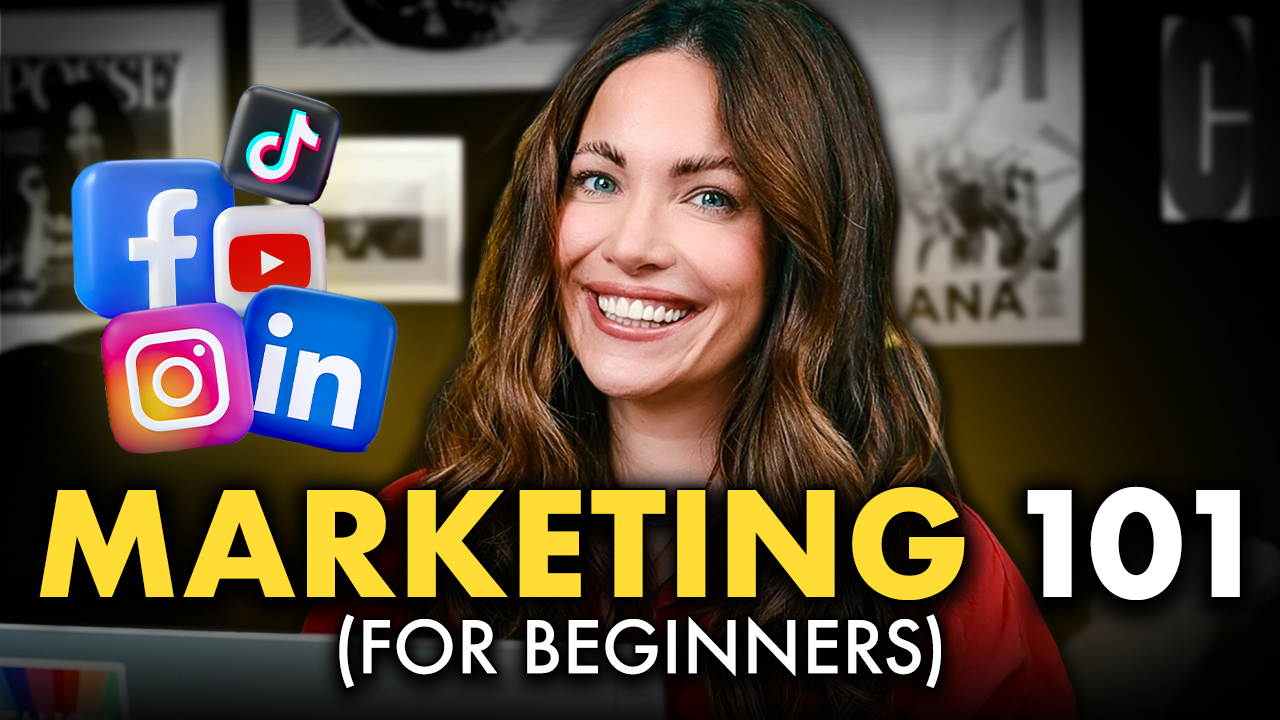How To Write Copy That Sells Like CRAZY
Hey guys! It’s Alex. And coming in hot this week is another article by request. Over the past few months, many of you have commented asking me to spill the tea on how I go about the research phase of copywriting.
Or in other words, how I find the best and most relevant information to add credibility, authority and accuracy to my sales copy.
Now, one of the biggest misconceptions about copywriting is that we just get straight down to writing the second we get a new project or client. NOT true. The biggest chunk of copywriting time actually goes into research, customer mapping and market analysis… BEFORE you ever start writing.
Having a clear grasp of the business you’re writing for and its target audience is absolutely critical to write copy that converts.
The best way to do that is through understanding the market so you have the right references and case studies to inspire and validate the angle of your messaging.
And I get it — when you’re new to this it can feel a little overwhelming to figure out exactly where to start.
And if you’re not careful, you can spend hours and hours navigating through millions of content pieces and resources online to find research to back up your hook and offer.
So my team and I decided to prepare this handy guide for you — in fact this is based on a bonus training that I created for my students inside my copywriter coaching program, the Copy Posse Launch Pad.
If you want more guides and tutorials to ignite your copywriting business, you know what to do if you. If you’re not yet part of the raddest copywriting crew on the internet, join the Copy Posse Newsletter now!
And if you’re already part of the Posse, leave me a comment below to let me know you’re here!
And now, here are 5 research tips to help you write insanely better sales copy…
Tip #1. Google It (The Right Way)!
I know I know – you’re thinking DUH. That’s obvious. Everyone knows how to use Google, right?
I mean, show me a person with access to the Internet who has never done a Google search in their life… and the next round is on me!
As you already know, Google is a fantastic tool for you to dig up some data and references on the market that you want to write for…but, it can also lead you down a rabbit hole of information, not all of it legit, that can suck your time, and the conversions and credibility straight outta your copywriting.
So, you gotta make sure you’re using the Good ol’ Googs the right way. Yes, research can be a much quicker process if you know exactly how to utilize this search engine.
So here’s the tip, when researching the niche, sub-niche or product you’re writing for, use Google’s phrase match parameters in your search.
Yes. I’m going to explain that. So, for example, say you’re searching for industry stats for the yoga niche, for a female audience.
If you type in simple YOGA STATS WOMEN, you’re going to get search results that contain any variation of any part of that keyword phrase, as well as other related topics.
That’s considered a broad keyword search and can make it more difficult to find exactly what you’re looking for as you’re scrolling through yoga products, yoga reviews, yoga blogs, etc.
But if you add quotation marks around that search term, like this: “YOGA STATS WOMEN” you’re telling Google that you ONLY want to see search results that contain those words or any close variations of that phrase. This helps narrow down your research to get targeted search results.
Cool right?
Ok moving on to tip #2…
Tip #2. Search Online Marketplaces
A great way to better understand the market of the niche or sub-niche you’re writing for is to check out what other brands are doing to sell similar products and services.
A little competitive research is a great way to define a clear and distinct USP in your messaging. Your USP is what makes the product you’re writing for better/simpler/easier/faster than the other guys.
One of the best ways to do that is to check out online marketplaces like ClickBank, Udemy, Coursera, Shopify, AliBaba, Etsy, etc!
All of these online sales sites have already done the job of categorizing products by niche or topic. Just search under your niche category to shortlist, browse, and review competitor sales pages.
For example, when I was conceptualizing my course, the Copy Posse Launch Pad, I turned to Udemy to see what other copywriting courses were offering to make sure that I designed a USP that was competitive but unique.
Tip #3. Reference Authority Sites
There are a ton of credible resources and sites online that have likely already done research and curation FOR YOU. So find the authority sites in your niche and see what information they share to keep your research relevant and fresh.
I love referencing the marketing, branding and business blogs by Hubspot, Optin Monster and Digital Marketer to find lists, stats and case studies to reference for my content and copy.
Also, here’s an important tip — given how fast brands and markets develop, make sure you’re not referencing any content older than a couple years. The good news is, authority sites need to continually update their content to stay an authority site in the mind of Google. So you can usually trust their information is up-to-date.
And while you’re at it – bookmark these sites in an inspo folder in your browser because you never know when you’ll need to have those handy!
Tip #4. Use Facebook’s Ad Library
Ok this is a JUICY tip and it’s something that I do all the time…
If you want to see what other brands and businesses in your niche are doing in terms of Facebook Advertising, instead of browsing through your feed endlessly waiting for an ad to pop up, just head on over to their Facebook Ad Library.
Yes! Every brand who advertises on Facebook has a public ad library that offers a comprehensive, searchable collection of all ads they are currently running on Facebook, Instagram, and Messenger. Say whatttt?!
That’s right — it’s the social media platform’s way of practicing transparency and authenticity with their advertisers.
Just simply go to a company’s Facebook Fan Page, navigate down to where it says “Page Transparency” and click “See More”.
Then, on the pop-up window, click “Go To Ad Library”.
Once there, be sure to filter for “All” under the geographical targeting drop down or else it will default to your home country.
And there you have it – you get to see each and every active or inactive ad they have.
This is an awesome way to do some research and get some inspiration from some of the most creative and effective Facebook advertisers out there. Plus — it’ll help you identify what other brands are doing to optimize their Facebook ads over time.
And guys, this is for INSPIRATION ONLY. It’s not a swipe file that you can use to steal ad copy and plagiarize their content. If you copy what others are doing you’re not a copywriter, you’re a copy-catter and it’s not cool and you won’t last long in this industry.
Tip #5. Ask Your Customers
I’m telling you the BEST source for copywriting research is your existing (or your client’s existing) customers.
Why try to guess what your audience wants when you can get it straight from the horse’s mouth.
It’s definitely worthwhile to survey your existing customers or prospects and ask them how you can best serve them. This is also a great way to create rapport and build trust with your audience before a promotion.
Some of the most successful copywriting campaigns I’ve ever done started with a survey to an email list asking subscribers about the #1 challenge they needed the most help with.
My Copy Posse Launch Pad was 100% based on feedback I received from my email list. Knowing that my audience’s #1 challenge was creating a portfolio that would help them get clients, I created a program geared towards helping you learn and WRITE highly-paid copy assets and create an irresistible portfolio.
Btw, I’ve finally, after many requests, made the recordings from my closed-door Copy Posse Launch Pad coaching program available.
And I hope these research tips will help you get started on the right foot as you embark on your next copywriting project.
Do you have any tips that you’ve used or heard of before? Share them with me and the rest of the global posse below!
And keep those requests coming in guys— I love hearing your suggestions and sharing the techniques and strategies I’ve used to build a successful copywriting business from the ground up… so you can do the same.
As always, thanks for reading! I will see you next week with a brand-new post. Until then, I’m Alex. Ciao for now!


